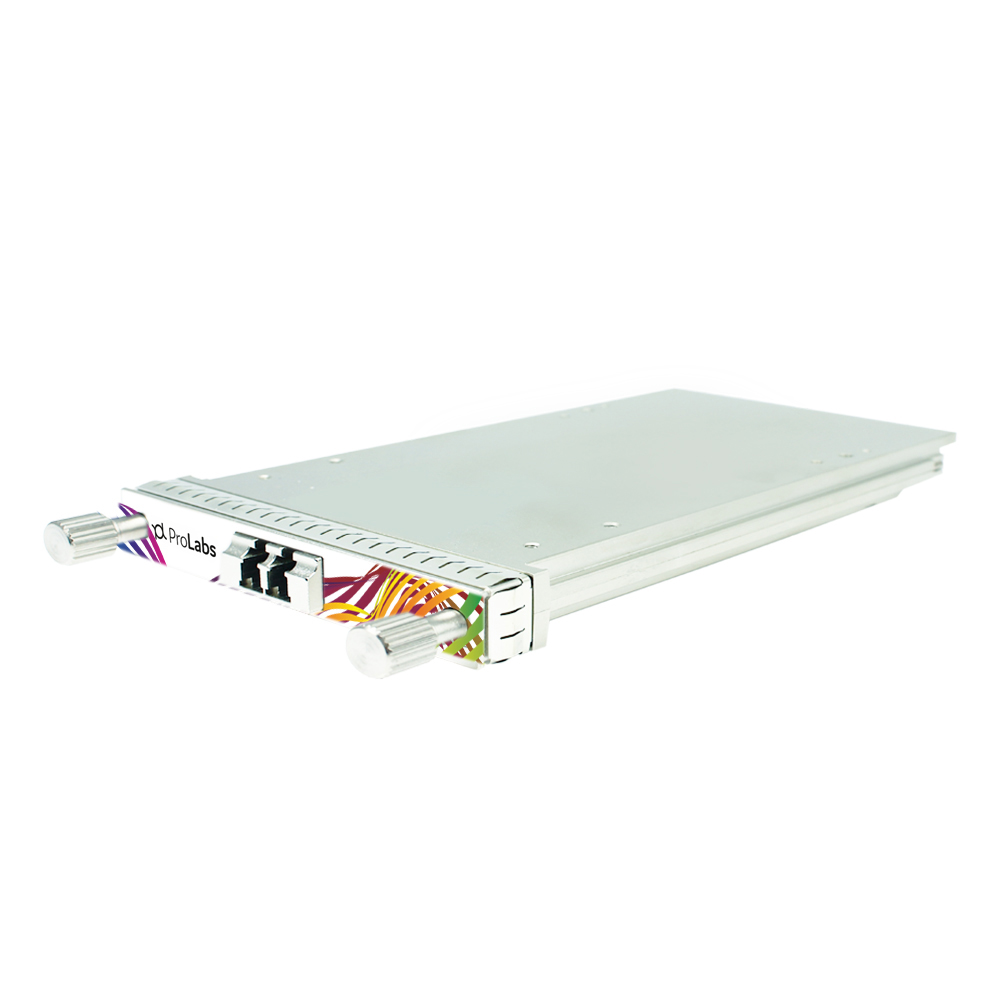In this article we will take a deeper look at coherent detection transceivers as they are one of the most important developments supporting optical data communications. It is not a new technology, but recent advancements are so profound that it's the primary enabler of higher data rates and longer reach on today's networks.
At a fundamental level coherent optics apply a technique that uses modulation of the amplitude and phase of the light, as well as transmission across two polarizations, to enable the transport of considerably more data through a fiber optic cable.
Advances in material science for CPUs, lasers and photonic integrated circuits (PIC) enabled coherent detection. These developments have helped to form the basis for the longer reach and higher bandwidth applications, e.g. transcontinental and subsea applications. Experience gained in these high value, high cost applications is now transforming the economics of coherent detection and bringing the benefits of coherent optics to shorter reach, cost sensitive applications.
Encoding & Decoding
There are two primary methods for encoding and decoding optical links for data networks, direct detection and coherent detection. Both techniques share some fundamental properties. An optical transceiver consists of a transmitter and a receiver, among other components. The transmitter and receiver are encoding 0s and 1s as pulses of light. For example, the absence of laser light (off) would represent 0 and the presence of light (on) would represent 1. In a direct detect transceiver the transmitter state is either on or off.
This on or off state is decoded at the receiver as a 1 or a 0. To transmit more data, the laser must flash on or off faster. This works well, except as distances and data rates increase, it becomes progressively more difficult for the receiver to determine if the transmitting laser is on or off. This occurs for several reasons, including dispersion and the ability to modulate the laser at higher data rates. The need for longer distances and higher data rates is clear and they are driving innovation in coherent detection.
Increasing demand for higher bandwidth has also led to the creation and adoption of Dense Wave Division Multiplexing (DWDM). Originally, DWDM networks used detect transceivers, each of these transceivers is assigned a unique wavelength. Multiple wavelengths can be carried on the same fiber without interfering with one another. This approach has been a primary method of adding bandwidth to city and regional long-haul networks.

As data rates increase and wavelengths are added to fibers, there is a point at which the limitations of faster laser transmitting/receiving and increased DWDM wavelength packing per fiber reaches the limitations of physics. Coherent detection helped solve this challenge by increasing the bandwidth available on each wavelength. They are now the primary technology for increasing bandwidth on DWDM networks for short and long-haul links.
Three characteristics of light used to increase bandwidth
Coherent detection enables both higher data rates and longer transmission distances. To understand why, we need to look at how direct detection operates. The short answer is that coherent transmission enables more bits per symbol. To carry more than a single 1 or 0 coherent detection employs three dimensions of light, 1) amplitude, 2) phase and 3) polarization. Using these three variables it is possible to send more bits (1s, 0s) per time period. This enables much greater throughput:
1. Amplitude
Amplitude can be imagined as a wave. The wave will have a height and a depth as measured from a central point between the height and depth. The high point of the wave might signal a 1 and the low point a 0. Also, waves can be large or small and the relative height or depth of the wave can represent a different symbol. For example, a small height might represent a 11 and a small depth a 00. So, by varying the amplitude (height or depth) of the wave multiple bits (symbols) can be transmitted (encoded) per time period. A limitation of this method is that only one symbol at a time is transmitted.
2. Phase
The phase of the wave is used to add more symbols per time period. Phase divides the wave into sections, like slicing a cake. Each section of the wave can represent a different symbol. Using the wave analogy, the peak of the wave might be a 11 and the next slice down might be a 10 and the slice below that a 01 and the bottom of the wave a 00. In this way, one wave can represent four symbols, thereby increasing the data rate or bandwidth available on the link.
3. Polarization
Polarization is the third characteristic of light used to increase the symbol rate per time period and thereby increase the bandwidth. Polarization can be thought of as the directions on a compass, north, east, south west. The waves can be aligned so their peaks and troughs are in one of these four directions. Each direction represents a separate bit stream and each carries information independent of the other. The key point is that all four polarization's can be present at the same time which increases the number of symbols per second. The compass has 4 cardinal directions and it makes a simple analogy to envision light polarization. However, there is no reason to limit polarization to 4 directions. Many implementations of coherent transceivers use 8 or 16 or more polarizations to transmit even more symbols per second.
Digital Signal Processors
Combining amplitude, phase and polarization offers the ability to encode a greater number of symbols per time period. However, encoding and decoding this light requires significant computational power. Digital Signal Processors (DSP) developed to fill this need. The speed and complexity of these calculations required the development of these specialized chips. The chips themselves use the latest in 7nm chip technology. Just as important are the algorithms used to encode and decode the light. One of the key intellectual properties of optical vendors are the complex algorithms that combine amplitude, phase and polarization in unique ways, to enable higher symbol rates per time period.
Conclusion
Developments in coherent detection brings greater complexity to optical transceiver technology. At ProLabs we specialize in making them productive for our customers. Optical performance capable of reaching these data rates and distances makes testing and quality control more important to suppliers and end users alike. The team at ProLabs invests significant resources and manpower to ensure our customers have the highest performing solutions for their applications. In the world of coherent transceivers, one size does not fit all. Fiber characteristics, network applications, incumbent vendor equipment, e.g. Cisco, Nokia, Edgecore, network design, and other factors all play a role in determining what coherent transceivers fit the requirement. ProLabs understands these requirements to bring our customers solutions that work today and into the future.
Simply follow the links below to see our full series of coherent articles:
- Coherent Optics: The Beginning of a Universal Approach
- Optic Impairments and Coherent Optics: Explained
- Key Transceiver Form Factors and Migration to Coherent Transmission
- Everything You Need To Know About Industry Standards


